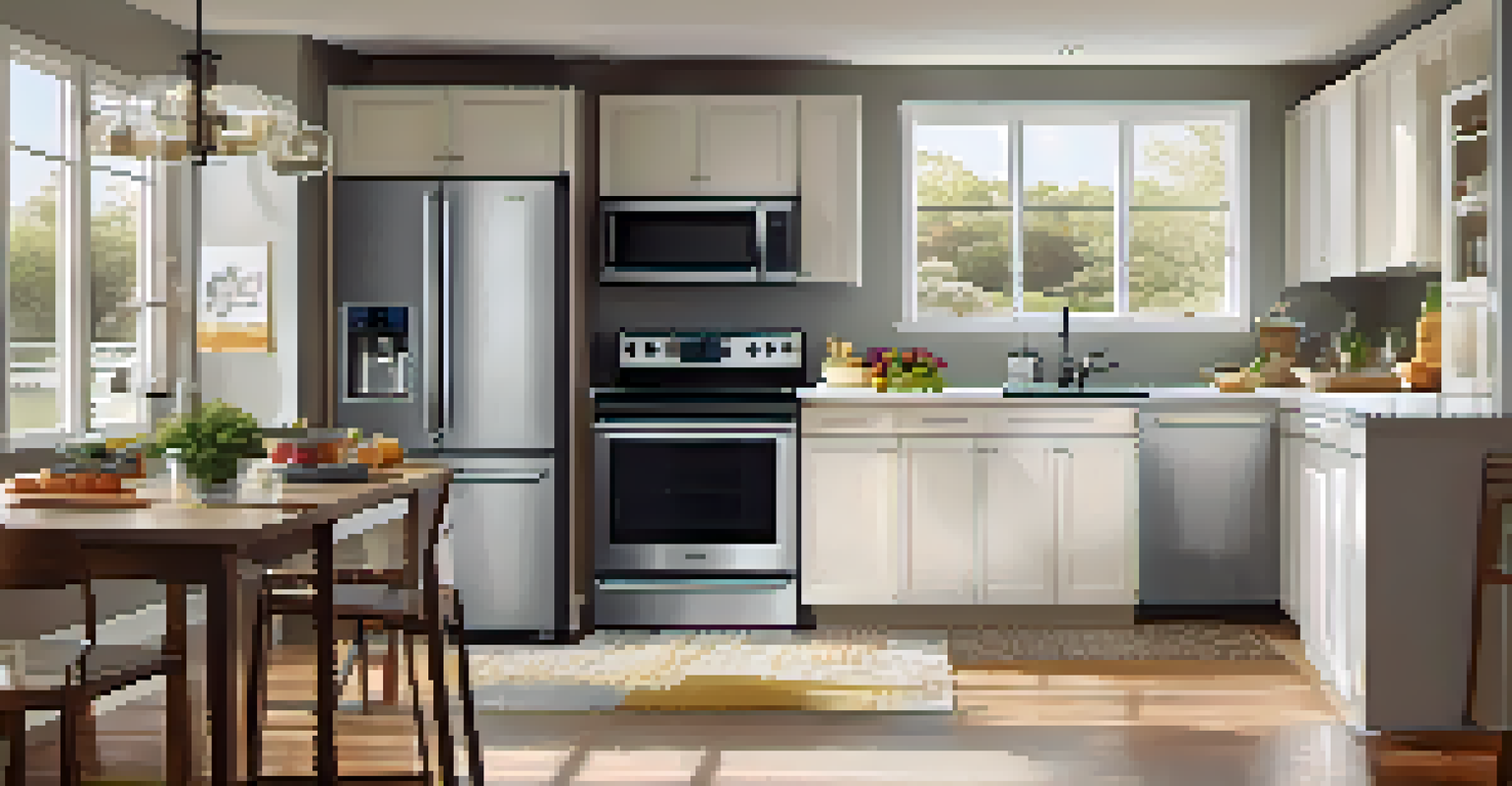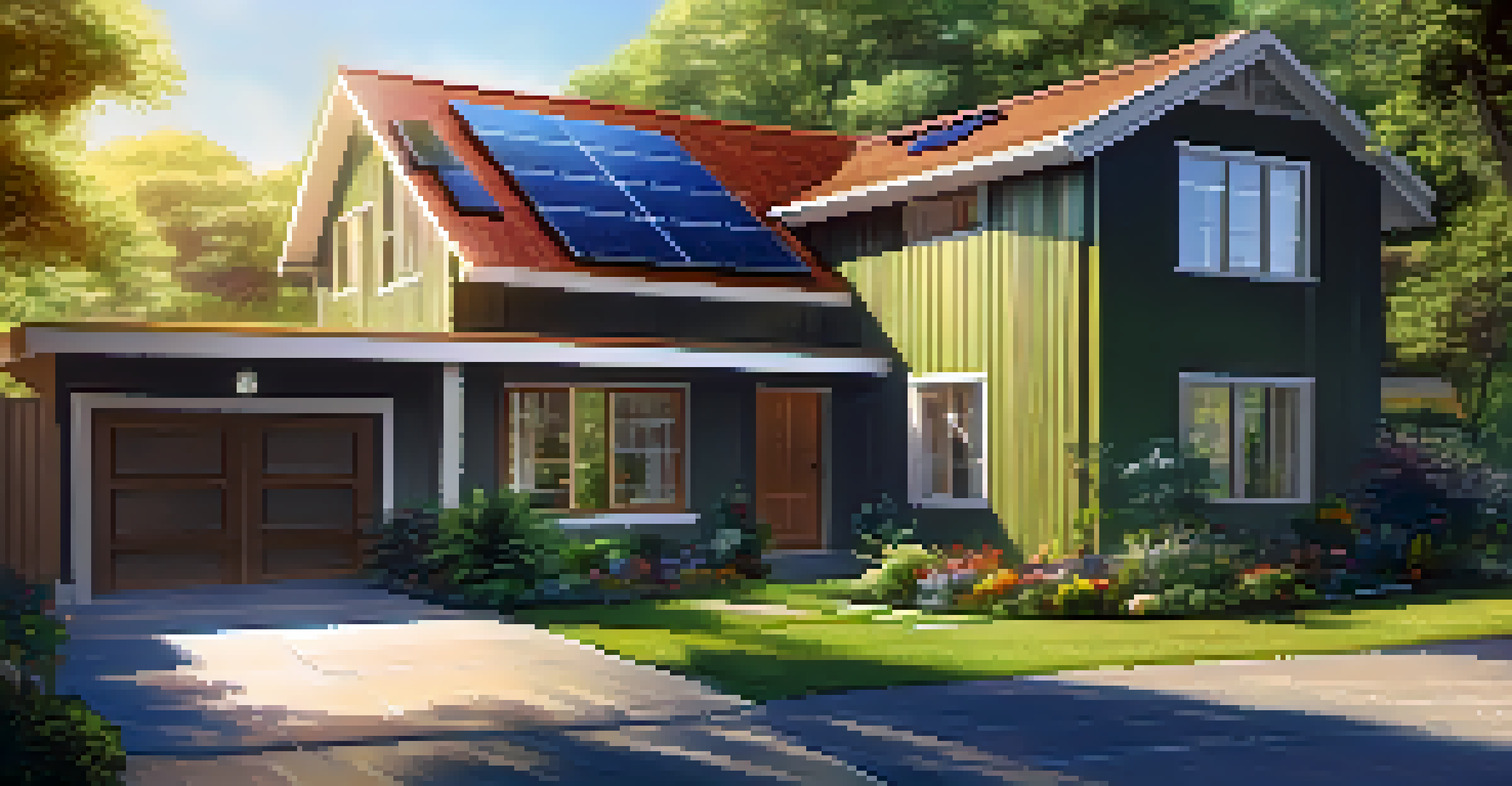Top 10 Energy-Efficient Home Improvements for Homeowners

Upgrade to Energy-Efficient Windows for Better Insulation
One of the most impactful improvements is replacing old windows with energy-efficient models. These windows are designed to reduce heat transfer, keeping your home warmer in winter and cooler in summer.
Energy efficiency is not just a goal; it’s a responsibility we all share.
Not only will you enjoy a more comfortable living space, but you'll also see significant savings on your energy bill. According to the U.S. Department of Energy, energy-efficient windows can reduce energy costs by 7-15%.
Additionally, modern windows often come with UV coatings that protect your furnishings from fading, making this upgrade a win-win for both comfort and aesthetics.
Insulate Your Home to Reduce Heating and Cooling Costs
Insulation is your home's best friend when it comes to energy efficiency. Proper insulation keeps heat from escaping in winter and prevents it from entering during summer, reducing your reliance on heating and cooling systems.

Areas like attics, basements, and even walls can benefit from insulation upgrades. For example, adding insulation to your attic can save you up to 20% on your energy bills.
Upgrade to Energy-Efficient Windows
Replacing old windows with energy-efficient models can significantly enhance comfort and reduce energy costs by 7-15%.
Plus, with various options available, such as spray foam or fiberglass, homeowners can choose the type of insulation that best suits their needs and budgets.
Invest in Energy-Efficient Appliances for Long-Term Savings
Swapping out old appliances for energy-efficient models is a smart move every homeowner should consider. Look for the ENERGY STAR label, which indicates that the appliance meets strict energy efficiency guidelines.
The greatest threat to our planet is the belief that someone else will save it.
These appliances not only save energy but often come with advanced features that enhance performance. For instance, modern refrigerators are designed to use less energy while providing more storage space.
Over time, the savings on your utility bills can offset the initial investment, making this upgrade a financially savvy choice.
Switch to LED Lighting for Energy Savings and Longevity
If you haven't made the switch to LED lighting yet, now's the time! LEDs consume up to 80% less energy than traditional incandescent bulbs and last significantly longer.
This means fewer trips to the store for replacements, as well as lower electricity bills. For example, replacing just five of your most-used bulbs can save you about $200 over their lifetime.
Invest in Energy-Efficient Appliances
Swapping out old appliances for ENERGY STAR models not only saves energy but also offers advanced features that improve performance.
Moreover, LEDs come in various styles and colors, allowing you to enhance your home’s ambiance while being energy-conscious.
Install a Programmable Thermostat for Efficient Temperature Control
A programmable thermostat is a simple yet effective way to manage your home's temperature efficiently. By setting schedules, you can ensure that your heating and cooling systems only run when you need them.
For example, you can set the thermostat to lower the temperature during the hours you’re away at work. This can lead to savings of about 10-15% on your heating and cooling bills annually.
Plus, many modern thermostats offer smartphone connectivity, allowing you to adjust settings remotely for even greater convenience.
Consider Solar Panels to Harness Renewable Energy
Investing in solar panels is one of the most impactful energy-efficient improvements you can make. They harness sunlight to generate electricity, significantly reducing your reliance on the grid.
While the initial investment can be considerable, various tax incentives and financing options make it more accessible. Additionally, many homeowners report significant savings on their energy bills after installation.
Consider Solar Panels for Savings
Installing solar panels allows homeowners to harness renewable energy, leading to substantial long-term savings on energy bills.
Over time, as energy prices rise, your solar panels can provide a stable and renewable source of energy, contributing to both environmental sustainability and financial savings.
Seal and Weatherstrip Doors and Windows for Efficiency
Sealing and weatherstripping are often overlooked yet crucial steps in creating an energy-efficient home. By preventing drafts, you can keep your indoor climate stable and reduce the workload on your HVAC system.
Simple materials like caulk and weather stripping can be easily applied to doors and windows, making this a low-cost improvement. Even small gaps can lead to significant energy loss, so it’s worth taking the time to inspect your home.

With a few hours of work, you can enjoy a more comfortable home and see a noticeable drop in your energy bills.
Upgrade Your Water Heater to Save Energy and Money
If your water heater is older than ten years, it might be time to consider an upgrade. Modern water heaters are designed to be more energy-efficient, which means they use less energy to heat the same amount of water.
Tankless water heaters are particularly popular because they provide hot water on demand, eliminating the energy loss associated with traditional tank heaters. This can lead to significant savings on your energy bills.
Choosing the right water heater not only enhances efficiency but also contributes to your overall home's value, making it a worthwhile investment.